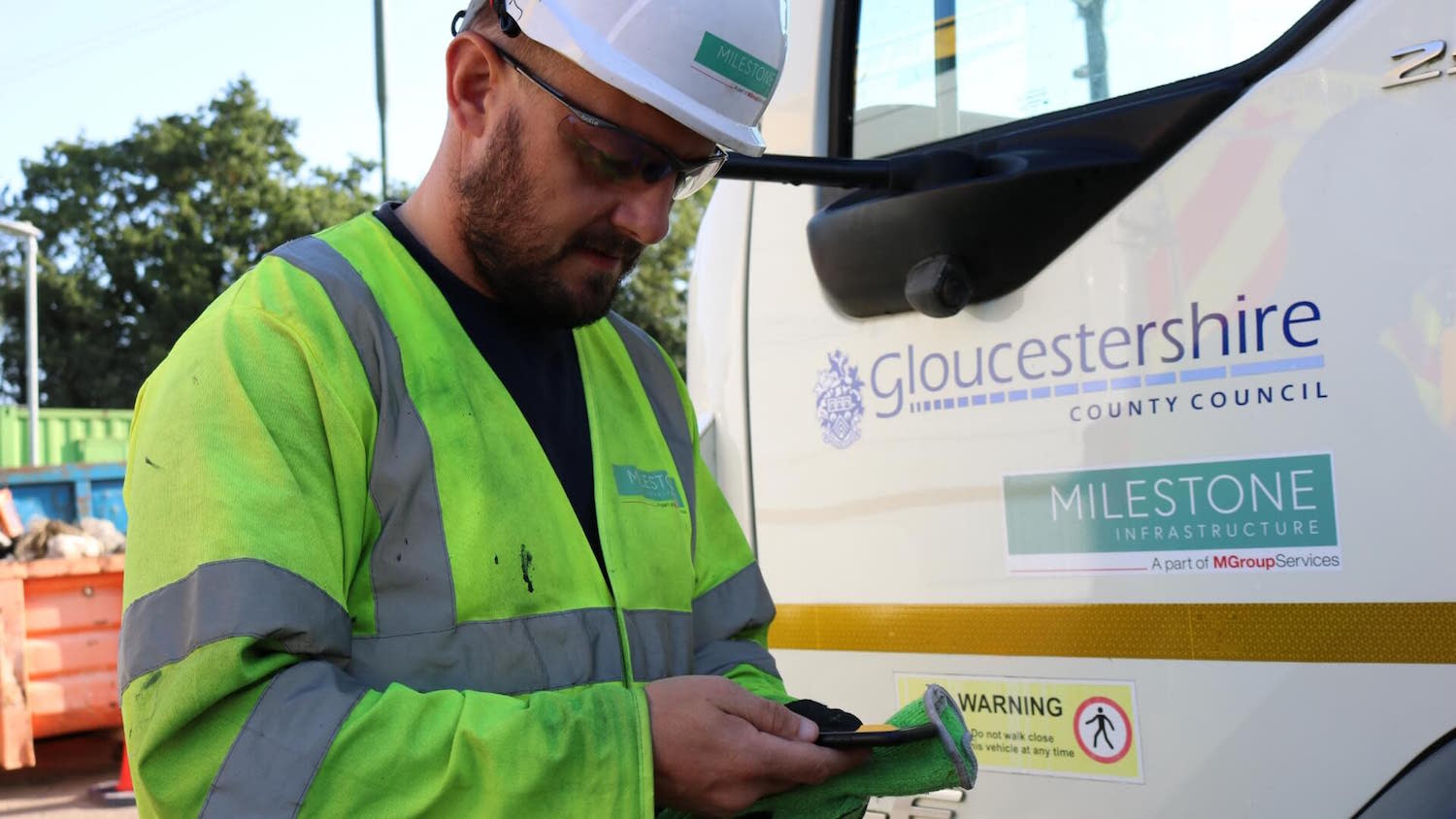
Highways maintenance is not necessarily associated with innovation, but at Milestone Infrastructure Services, head of digital and innovation Steven Frost has been breaking the mould. Denise Chevin caught up with him.
“The main aim for Milestone is to make highways safer and greener. A focus for me is to use digital and data tools will help us achieve our aims,” says Stephen Frost.
Milestone, now part of the £1.7bn turnover M Group, operates as a standalone business, delivering highways maintenance, street lighting and civils projects through existing, long-term relationships with local authority clients and multiple framework agreements across England.
Frost oversees the digital transformation activities and heads up company-wide innovation projects. “My role involves looking at new ideas, making sure that there is a good business case, and that the trials are running smoothly. Then if the idea is approved for implementation, part of my duties is to scale up the local initiatives into a Milestone-wide initiative,” he says.

“Our daily operational activities produce vast amounts of data that can be terrifying to look at all at once.”
Frost has driven automation of many of the documented processes involved with highways maintenance and has adopted augmented reality to improve site safety.
A self-confessed tech geek, Frost says: “I’ve always been into science and technology. Outside work, I build and tinker with PCs as well as learning coding languages and enjoy using designing and printing ideas on my 3D printer.
“I got into engineering in school and continued this to HNC level in civil engineering while working. My first role was as a draftsman using CAD, focusing on buildings. Every role since then has been involved with technology.”
BIMplus: How are you employing technology in the business?
Steven Frost: The main activity at Milestone has been digitising all our reporting and fieldwork operations, as well as standardising and integrating where possible the digital tools we use every day across the business. Procore, Causeway, Power Platform and M365 make up some of our core tools, as well as apps that have been developed in-house.
Our daily operational activities produce vast amounts of data that can be terrifying to look at all at once. The key to unlocking this data is the use of visual representations for people to really understand, analyse and look at things in a different way. It can be as simple as just viewing it as points on a map, highlighting that there’s a cluster site.
Having a standardised data collection and reporting process puts us in a great position to leverage AI in the future.
How have things changed?
Before we implemented all the systems we have in place, paper documents were commonplace. You would see a lot of ring binders of information that would be given to the operatives on site. Information was captured on paper forms, for example waste transfer tickets and site induction logs. But we would still have to digitise the information by keying it into spreadsheets. It was all very labour-intensive.
Now, with our new processes, site teams input everything directly into a digital tool at the point of capture. A great example of this would be our waste ticketing app that allows us to monitor how much has been produced, where it is, its category, and where it has been recycled to, all on the same day, captured inside one system. The validated data then automatically feeds into our carbon calculator using automation techniques. This process removes the previous manual steps for data entry and allows our environmental advisors to focus on validation steps.
“Measuring productivity changes has been the most challenging part of the process. But we have managed to quantify savings in both time and cost.”
This digitisation-first approach is carried through to our subcontractors and clients as well. Many of our clients and subcontractors have access to our Procore field management tool. This ensures everyone working on a project has access to the same information, with changes or updates shared in real-time. And when required they can even input into our shared system.
Collecting all this information in a central place allows us to drive our performance and efficiency by improving the way we work on a day-to-day basis.
How have you measured the productivity benefits?
Measuring productivity changes has been the most challenging part of the process. But we have managed to quantify savings in both time and cost with some of our key improvements. Our waste app, developed in-house, has removed at least a week’s worth of validation work per month for our contract environmental advisers. This is due to the in-built app validation checks and standardised selection lists. The latter also reduce the form completion time for operatives by more than 60% compared with the paper form.
What newer technology are you testing or considering?
One of our recent implementations is Trimble’s Sitevision tool. It uses augmented reality to overlay design information in the field. The platform is well-established in the buildings industry, but applying it in the highways maintenance sector is relatively new.
Our work on the highways typically involves breaking ground. To do this safely, we need to implement our safe digging practices and survey for underground services in our works area. We take the GPR surveys and put them into the Sitevision platform. The latter allows our site teams to use the mobile app and local GPS receiver to view the services as they walk the site. The advantage in using this tool is that it gives our site teams x-ray vision into the site area.
There are many other areas that we are exploring, including understanding how and where we can use AI across Milestone. We use the Samsara platform that uses AI to monitor driver safety. We are also exploring vehicle-mounted camera-based AI asset detection systems that have the potential to change the way the industry understands asset collection.
Don’t miss out on BIM and digital construction news: sign up to receive the BIMplus newsletter.














